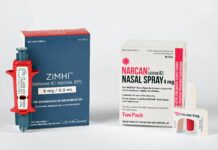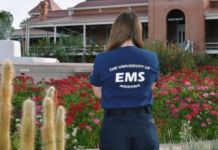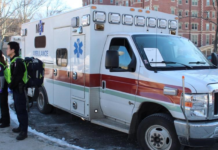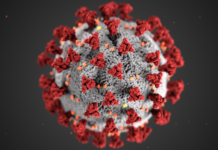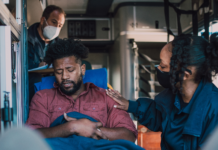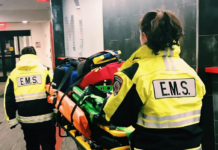Abstract
Sexual assault is a pervasive public health issue on college campuses in the United States. Given that perpetrators of sexual violence often use alcohol and other drugs to generate vulnerability among victims through severe intoxication, victims may interact with collegiate-based emergency medical services personnel to receive medical care. It is crucial that collegiate first responders understand the dynamics of sexual violence and recognize the various health risks among patients who have experienced drug-facilitated sexual assault. Therefore, the purposes of this article are to review drug-facilitated sexual assault in the college environment, examine the health effects of drugs and alcohol in facilitating sexual violence, and discuss proper response and treatment guidelines for collegiate first responders.
Introduction
The Centers for Disease Control and Prevention identifies sexual assault as a serious public health issue affecting millions of men and women in the United States.1 Sexual assault refers to a range of sexual acts or behaviors that occur without the explicit consent of the recipient, including the unwanted fondling or sexual touching of an individual, attempted rape, coercion or forcing of an individual to perform sexual acts, or the unwanted penetration of an individual’s body.2 Rape is a legal term defined by the F.B.I. as “the penetration, no matter how slight, of the vagina or anus, with any body part or object, or oral penetration by a sex organ of another person, without the consent of the victim.”2
While some perpetrators physically force or threaten victims to engage in sexual activity (ie, forcible sexual assault), increasing awareness is evolving around the use of drugs and/or alcohol as another means to facilitate sexual violence.3-10 Previous literature refers to this type of sexual assault using the terms incapacitated sexual assault6, drug-enabled sexual assault7, and drug-facilitated sexual assault8. In this review, the term drug-facilitated sexual assault (DFSA) is used to refer to any act of sexual violence committed against someone who is, voluntarily or involuntarily, under the influence of one or more disinhibiting substances. DFSA is described using two categories: (1) Proactive DFSA: the covert or forcible administration of a disinhibiting or incapacitating substance to an individual by an assailant for the purpose of sexual assault, and (2) Opportunistic DFSA: the act of taking advantage of an individual who is profoundly intoxicated to the point of near or actual unconsciousness by voluntary ingestion of sufficient amounts of drugs or alcohol.11 In both instances, perpetrators exploit the vulnerability of an individual, generated through the disinhibiting effects of drugs and alcohol, to enact sexual violence.
There is evidence that approximately 1 in 5 women12,13 and 1 in 16 men12 have been sexually assaulted while in college. Numerous studies have shown that drug or alcohol-related sexual assaults on college campuses are more frequent than forcible sexual assaults.7-10 Given that the use of drugs and alcohol in DFSA is meant to generate vulnerability among individuals through severe intoxication, individuals on college campuses who have experienced DFSA may interact with collegiate-based emergency medical services (CBEMS) personnel to receive medical care.
While no studies have examined the intersection between CBEMS and DFSA, some studies describe the response of CBEMS and other emergency medical services (EMS) organizations to alcohol-related emergencies on college campuses. Carey et al14 found that alcohol intoxication was responsible for approximately 1 out of every 6 campus-based ambulance runs at a private four-year residential university in the northeastern United States in 2005-2006. Additionally, Rosen et al15 reported that more than twice the number of students were transported to an emergency department for alcohol intoxication following the introduction of a CBEMS agency at a small liberal arts college in the northeastern United States in 2009. Although the study was limited in scale, the authors noted that the presence of CBEMS may promote a culture on college campuses that is conducive to increased reporting and care-seeking behavior. Since sexual assaults frequently involve the voluntary consumption of alcohol,6,16-21 CBEMS providers may be likely to interact with patients who have experienced DFSA.
CBEMS providers have a unique role in responding to on-campus DFSA-related calls: student first responders have the ability to provide initial peer-to-peer support and to establish a strong foundation in the chain of medical care. Thus, it is crucial that collegiate first responders understand the dynamics of sexual violence and recognize the various health risks among patients who have experienced DFSA.
Clinical Presentation
Presentation of a Sexually Assaulted Patient
Sexually assault patients may present in a variety of ways. Especially for a possible DFSA, the initial dispatch may not come through for a chief complaint of sexual assault. Other chief complaints may be intoxication, anxiety, altered mental status, or unconsciousness. Many patients may choose not to disclose sexual assault; for example, patients may fear being blamed by others or may blame themselves for the assault. Patients may also not remember the events throughout the night, or patients may not explicitly identify their experience as sexual assault. However, providers should be aware of signs and symptoms indicative of DFSA nonetheless (Table 1).22 For these reasons, CBEMS providers must provide treatment with an unparalleled level of respect while treating any immediate life-threatening injuries.
Table 1. Signs that a patient may have experienced DFSA
Presentation Based on Substance(s) Ingested
With possible DFSA patients, presentations may vary depending on the substance(s) ingested. There is a common perception that DFSA is committed by proactive perpetrators who covertly “spike drinks” with fast-acting, colorless, and odorless sedatives such as flunitrazepam (also known as Rohypnol) or gamma hydroxybutyrate (GHB). However, research17-21 examining toxicological results from cases of suspected DFSA typically reveals that “drink-spiking” is fairly uncommon. Research suggests that DFSA is more opportunistic rather than proactively perpetrated. Voluntary consumption of illicit substances, and alcohol in particular, more frequently precedes sexual assault than does the involuntary consumption of flunitrazepam, GHB, or related substances. While recognizing the link between alcohol and DFSA, it is important to emphasize that the voluntary consumption of drugs and/or alcohol does not in any way reduce the culpability of the perpetrator in committing sexual assault, nor does it reduce the potential victimization experiences of the individual. Instead, these findings demonstrate that perpetrators actively exploit opportunities of vulnerability (generated through incapacitation via drugs and/or alcohol) to enact sexual violence. These findings also underscore how important it is that CBEMS providers refrain from blaming the patient for the assault, and provide non-judgmental treatment.
Providers should also be aware that alcohol can serve as a vehicle for the involuntary administration of other drugs, such as GHB or flunitrazepam. These drugs are known to induce anterograde amnesia, leaving the patient with little or no memories of the assault.23 Overall, the use of GHB or flunitrazepam is quite uncommon,17,19-21 but patients who ingest these substances may acutely present with altered mental status, unconsciousness, nausea, vomiting, or respiratory depression. A provider’s index of suspicion for proactive DFSA should increase if a patient is showing signs and symptoms inconsistent with reported substances or reported amount of substances ingested (eg, the patient reports having one beer over an hour yet is drifting in and out of consciousness).
Ingesting or co-ingesting other substances may be dangerous or lethal, especially given that signs and symptoms vary depending on the substances ingested (Table 2).24 CBEMS providers should be aware of possible respiratory arrest or the need for respiratory support when large amounts (eg, relative to patient weight, sex, and tolerance) of sedative/hypnotics are consumed alone or in combination with other sedative/hypnotics or opioids. Medical control should be contacted for guidance regarding patients with respiratory distress or depression.
Table 2. Acute effects of common toxidromes
Presentation of Physical Trauma
Many sexually assaulted patients do not sustain obvious physical injuries.35 However, the absence of physical injury does not rule out the possibility of sexual assault. Injuries depend on patient-specific and assault-specific factors, such as the degree of force involved. Additionally, the detection of minor injuries may be dependent on provider training and experience. Studies report that the incidence of non-genital, physical injuries ranges from 23-85%.26 Such injuries may include soft tissue injuries, such as abrasions involving the head, face, neck, and extremities. Other injuries may be due to blunt force trauma, and may produce contusions, leading to swelling, tenderness, pain, discoloration, and/or lacerations.
Presentation of Psychological Trauma
Sexual assault is a traumatic experience. It is therefore important for EMS providers to understand that patients may respond to a traumatic event in a variety of ways. Denial, shock, anger, sadness, shame, and anxiety are all common responses among individuals who experience trauma.27 Cultural differences may also influence responses to a traumatic event.28 It is not uncommon for individuals who experience sexual violence to have memory impairments initially after the assault.29 Difficulty in recalling the events leading up to or during the assault may be due to the patient’s traumatic experience or the drugs or alcohol consumed. However, providers should recognize that memory impairment may also be a sign or symptom of a traumatic brain injury.
Guidelines for Treatment
The guidelines presented in this section are consistent with the recommendations issued by the Forensic Medicine Section of the American College of Emergency Physicians.30 Always consult medical direction and local protocols.
Treatment of Life Threats
For CBEMS providers, the treatment priorities for a patient following DFSA are essentially the same for any other patient, such that all efforts should be made to preserve the patient’s confidentiality and identity. Treatment includes ensuring the patient’s physical safety and evaluating, treating, and managing potentially life-threatening injuries to the patient’s airway, breathing, and circulation. In most cases, an examination of the patient’s genital area is not indicated and should not be performed. It is important for CBEMS to provide the patient with empathic care and to avoid asking detailed questions about the assault. Most details of the assault are not needed to provide effective care of the patient and may cross the line into a law enforcement function. Multiple accounts of the events, even with minor variations, may damage the patient’s perceived credibility at trial. Therefore, the provider should only obtain enough information to ensure that no life-threatening injuries exist.
Communicating with a DFSA Patient
When treating a patient who has been sexually assaulted, all efforts should be made by CBEMS and other medical providers to provide opportunities to give back power and control to the patient. Patients who have had sexual violence perpetrated against them may feel a loss of power and control over their bodies. Therefore, providing even small opportunities, such as asking the patient if the crew may take their blood pressure, may help the patient regain feelings of control.
All questions asked of the patient should be open-ended, non-judgmental, and non-victim blaming. Open-ended questions allow for a full, meaningful answer using the patient’s own knowledge and/or feelings, as opposed to closed-ended questions that allow for a single-word or short answer. When phrasing questions, CBEMS providers should avoid using judgmental or accusatory phrases, such as “Is this what you were wearing?” or “Why did you walk alone?” In their efforts to remain non-judgmental and non-accusatory, CBEMS providers may want to make efforts to “neutralize” various standard medical questions. For example, the question “How much did you have to drink tonight?” may seem accusatory to a possible DFSA patient. Instead, providers may mitigate the possible accusatory nature of the question by saying, “To ensure your medical safety, we would like to ask you a few questions. Do you remember how much you had to drink tonight?” Additionally, when speaking about the assault, CBEMS providers should refer to the incident using the patient’s own words. For example, if the patient states, “I was assaulted,” refer to the incident as an assault. If the patient states, “I feel like I was violated,” an appropriate question may be, “Do you remember if this injury was present before you were violated?” The use of the patient’s language demonstrates to the patient that the provider is attentive to their concerns and aids in establishing trust and rapport. Table 3 lists other examples of appropriate statements to use when assessing a possible DFSA patient.
Table 3. Examples of appropriate statements to say to a DFSA patient
Transportation to an Appropriate Facility
The patient should be transported to the most appropriate facility based on their presentation and medical needs. At a minimum, the facility should have sexual assault nurse examiner (SANE) services and, if there are serious injuries present, a trauma center may be indicated. Jurisdictions should have protocols in place to determine which hospitals can accommodate the needs of the DFSA patient. The CBEMS agency should also have protocols in place that designate which hospitals have specialized services to meet the needs of their patients (ie, SANE team, trauma center, burn center and crisis center).
Documentation
While CBEMS providers’ main roles are to treat any immediate life-threatening injuries and to establish a strong initial link in the chain of medical care, thorough documentation is vital. CBEMS providers should not attempt to determine if a sexual assault has in fact occurred. It is important for CBEMS providers to accept the patient’s statements as facts and to use direct quotations when recording any statements made by the patient. This documentation is especially crucial if the patient is critically injured or in extremis, because any statements uttered by the patient to a CBEMS provider may be the only time these statements are made. Such statements are considered excited utterances and are therefore admissible in court. When documenting, CBEMS providers should also avoid using terms like “alleged,” “reported,” or “possible” when describing the chief complaint of rape or sexual assault.
It is also critical for CBEMS providers to document all signs and symptoms of the patient in detail. These records will not only assist advanced providers in the continuity of care but may serve as a source of evidence for possible DFSA. Given that drugs such as GHB and flunitrazepam have fast metabolizing rates, the patient care report documenting these signs and symptoms may serve as the only evidence of DFSA if the patient does not undergo testing within the drug detection window.
Refusal of Care
At times, the patient may want to refuse treatment and transport. In most cases, the patient has the right to accept or refuse any or all medical treatments. Patients who have experienced DFSA are capable of refusing care when they appear clinically sober. This presentation means that the patient is awake, alert, and oriented to person, place and time, has vital signs within normal limits, passes a brief neurological examination, and understands their medical rights and options. The patient should be able to reiterate to the CBEMS provider what they were told about their options and alternatives to care. Based on jurisdictional protocols, medical control may have to be contacted for CBEMS to be released from the scene if the patient refuses.
Evidence Preservation
One other concern of CBEMS should be the preservation of potential forensic evidence. This preservation should not be done at the expense of other treatment priorities. If possible, the patient should be encouraged to refrain from voiding until transported to the emergency department (ED). If the patient needs to void prior to transport, however, their urine should be collected in a clean container and turned over to the ED staff. If any tissue or toilet paper was used by the patient to wipe the genitals, these items should also be placed in a paper bag and also turned over to the ED staff. The patient should be encouraged to bring any clothes they wore during or immediately after the assault as well as a clean change of clothes. If clothing has to be removed or cut, it should be transported to the ED with the patient, preferably in paper bags. If applicable, CBEMS should look to avoid cutting through any tears already present in the clothing. Lastly, gloves should be worn during the patient encounter to prevent cross-contamination or loss of evidence, and care should be taken to avoid touching any areas with possible biological evidence such as debris, stains, or bodily fluids.
Table 4. The DO’s and DONT’s of EMS management of DFSA patients
Conclusions
CBEMS organizations have a duty to better serve their campus communities. Therefore, agencies should look to connect with on-campus and off-campus sexual assault services to learn more about nearby resources as well as how CBEMS providers can properly direct patients to these organizations. CBEMS agencies may also choose to be representative members of the regional Sexual Assault Resource and Response Team (SARRT) to help with policy and protocol development. Lastly, CBEMS organizations may consider collaborating with sexual assault advocates and SANE programs to hold trainings and expand knowledge about sexual violence.DFSA is a pervasive public health problem on college campuses. Collegiate EMS responders must be aware of this issue and be equipped with the proper training and knowledge to respond. Many survivors of sexual violence do not report or seek help out of fear of being blamed for the assault and/or not being believed. It is estimated that approximately 90% of individuals who experience sexual assault on college campuses do not report their assault.31 In some cases, CBEMS responders may be the first people with whom the patient interacts with after an assault. Establishing a strong patient-provider connection that is built on trust and compassion, and that is focused on addressing the patient’s immediate needs and concerns, is imperative to ensuring the strongest continuity of care.
Currently, there are no studies examining the intersection between CBEMS providers and sexual assault response. Future research exploring this intersection is vital to understanding the role of EMS in responding to sexual assault. Assessing current attitudes and knowledge among EMS providers – especially CBEMS providers – on sexual assault may help advise future education and training on this topic. Additionally, assessing the barriers for sexually assaulted patients to receive medical care may warrant future research. As a potential initial point of contact for patients who experience sexual assault, positive experiences with first responders may profoundly influence their decisions for seeking further medical treatment.

